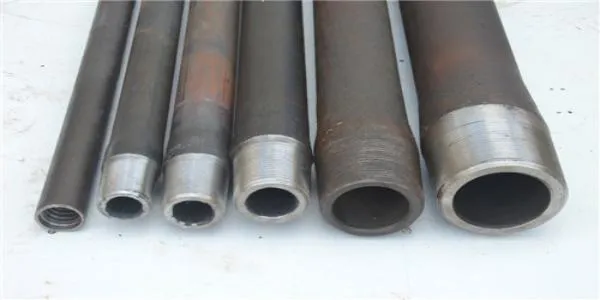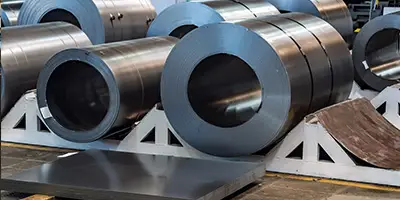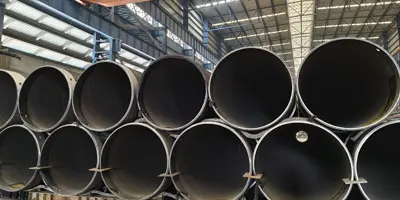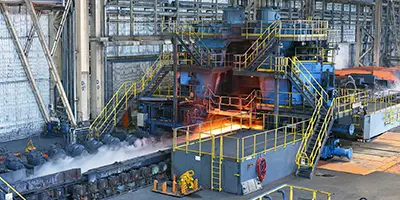Oil drill pipe is a key tool commonly used in oil and gas exploration and drilling operations. It consists of multiple sections of drill pipe, and its main function is to transport the drill bit and drilling fluid to the bottom of the well and bring rock samples back to the surface. Some drill pipes are made of seamless steel pipes through secondary processing. The inner diameter size of the drill pipe is crucial to the safety and efficiency of drilling operations. The following is a detailed introduction to common drill pipe specifications and their applications:
Drill pipe inner diameter specifications
NQ drill pipe: The inner diameter is 47.6 mm (1.875 inches). NQ drill pipe is usually used for shallow well exploration and core drilling. This specification of drill pipe is light and flexible, suitable for shallow drilling work with simple geological conditions.
HQ drill pipe: The inner diameter is 63.5 mm (2.5 inches). HQ drill pipe is suitable for core drilling and water well drilling at medium depth. Compared with NQ drill pipe, HQ drill pipe is more suitable for complex geological environments, and can provide larger diameter boreholes and better sample quality.
PQ drill pipe: The inner diameter is 85 mm (3.35 inches). PQ drill pipe is usually used for deep well exploration and core drilling. The design of PQ drill pipe enables it to work deeper in the well, provide a larger borehole diameter, and is suitable for obtaining more complete geological samples.
AW drill pipe: The inner diameter is 44.5 mm (1.75 inches). AW drill pipe is suitable for shallow water well drilling and environmental monitoring. This specification of drill pipe is light and easy to operate, and is often used for monitoring wells and shallow groundwater exploration.
BW Drill Pipe: The inner diameter is 54 mm (2.125 inches). BW drill pipe is commonly used for medium-depth water well drilling and soil sample collection. The design of BW drill pipe takes into account depth and operational flexibility and is suitable for a variety of geological environments.
NW Drill Pipe: The inner diameter is 75.7 mm (2.98 inches). NW drill pipe is suitable for medium-depth water well drilling and core drilling. The larger inner diameter of NW drill pipe provides better fluid transmission capacity and drilling stability.
HW Drill Pipe: The inner diameter is 98.4 mm (3.87 inches). HW drill pipe is commonly used for deep well exploration and large-diameter core drilling. The design of HW drill pipe enables it to provide larger drilling diameters and higher structural stability in deep wells.
2 7/8-inch Drill Pipe: The inner diameter is 73.02 mm (2.875 inches). This specification of drill pipe is suitable for medium-depth oil and gas well drilling, providing good balance and durability.
3 1/2-inch Drill Pipe: The inner diameter is 88.9 mm (3.5 inches). This drill pipe specification is suitable for deeper oil and gas well drilling, providing greater fluid transmission capacity and drilling efficiency.
4 1/2-inch drill pipe: The inner diameter size is 114.3 mm (4.5 inches). This specification of drill pipe is suitable for large-diameter oil and gas well drilling, and can provide higher stability and larger drilling diameter in deep wells.

Drill Pipe Specifications Table
|
Pipe
|
Tool Joint
|
|
Size OD,
|
Nominal Weight,
|
Upset Type
|
Grade
|
Wall Thickness,
|
ID,
|
Connection Type
|
OD,
|
ID,
|
Pin Tong Space*,
|
Box Tong Space*,
|
|
in.
|
lb/ft
|
in.
|
in.
|
in.
|
in.
|
in.
|
in.
|
|
2-3/8
|
6.65
|
EU
|
E-75
|
0.28
|
1.815
|
NC26
|
2003/3/8
|
2001/3/4
|
9
|
10
|
|
X-95
|
0.28
|
1.815
|
NC26
|
2003/3/8
|
2001/3/4
|
9
|
10
|
|
G-105
|
0.28
|
1.815
|
NC26
|
2003/3/8
|
2001/3/4
|
9
|
10
|
|
S-135
|
0.28
|
1.815
|
NC26
|
2003/5/8
|
2001/3/4
|
9
|
10
|
|
2-7/8
|
10.4
|
EU
|
E-75
|
0.362
|
2.151
|
NC31
|
2004/1/8
|
2002/1/8
|
9
|
11
|
|
X-95
|
0.362
|
2.151
|
NC31
|
2004/1/8
|
2
|
9
|
11
|
|
G-105
|
0.362
|
2.151
|
NC31
|
2004/1/8
|
2
|
9
|
11
|
|
S-135
|
0.362
|
2.151
|
NC31
|
2004/3/8
|
2001/5/8
|
9
|
11
|
|
3-1/2
|
13.3
|
EU
|
E-75
|
0.368
|
2.764
|
NC38
|
2004/3/4
|
2002/11/16
|
10
|
2012/1/2
|
|
X-95
|
0.368
|
2.764
|
NC38
|
5
|
2002/9/16
|
10
|
2012/1/2
|
|
G-105
|
0.368
|
2.764
|
NC38
|
5
|
2002/7/16
|
10
|
2012/1/2
|
|
S-135
|
0.368
|
2.764
|
NC38
|
5
|
2002/1/8
|
10
|
2012/1/2
|
|
15.5
|
EU
|
E-75
|
0.449
|
2.602
|
NC38
|
5
|
2002/9/16
|
10
|
2012/1/2
|
|
X-95
|
0.449
|
2.602
|
NC38
|
5
|
2002/7/16
|
10
|
2012/1/2
|
|
G-105
|
0.449
|
2.602
|
NC38
|
5
|
2002/1/8
|
10
|
2012/1/2
|
|
S-135
|
0.449
|
2.602
|
NC40
|
2005/1/2
|
2002/1/4
|
9
|
12
|
|
4
|
14
|
IU
|
E-75
|
0.33
|
3.34
|
NC40
|
2005/1/4
|
2-13/16
|
9
|
12
|
|
X-95
|
0.33
|
3.34
|
NC40
|
2005/1/4
|
2002/11/16
|
9
|
12
|
|
G-105
|
0.33
|
3.34
|
NC40
|
2005/1/2
|
2002/7/16
|
9
|
12
|
|
S-135
|
0.33
|
3.34
|
NC40
|
2005/1/2
|
2002/7/16
|
9
|
12
|
|
EU
|
E-75
|
0.33
|
3.34
|
NC46
|
6
|
2003/1/4
|
9
|
12
|
|
X-95
|
0.33
|
3.34
|
NC46
|
6
|
2003/1/4
|
9
|
12
|
|
G-105
|
0.33
|
3.34
|
NC46
|
6
|
2003/1/4
|
9
|
12
|
|
S-135
|
0.33
|
3.34
|
NC46
|
6
|
3
|
9
|
12
|
|
15.7
|
IU
|
E-75
|
0.38
|
3.24
|
NC40
|
2005/1/4
|
2002/11/16
|
9
|
12
|
|
X-95
|
0.38
|
3.24
|
NC40
|
2005/1/4
|
2002/7/16
|
9
|
12
|
|
G-105
|
0.38
|
3.24
|
NC40
|
2005/1/2
|
2002/7/16
|
9
|
12
|
|
S-135
|
0.38
|
3.24
|
NC40
|
2005/1/2
|
2
|
9
|
12
|
|
EU
|
E-75
|
0.38
|
3.24
|
NC46
|
6
|
2003/1/4
|
9
|
12
|
|
X-95
|
0.38
|
3.24
|
NC46
|
6
|
2003/1/4
|
9
|
12
|
|
G-105
|
0.38
|
3.24
|
NC46
|
6
|
2003/1/4
|
9
|
12
|
|
S-135
|
0.38
|
3.24
|
NC46
|
6
|
3
|
9
|
12
|
|
4-1/2
|
16.6
|
IEU
|
E-75
|
0.337
|
3.826
|
NC46
|
2006/1/4
|
3
|
9
|
12
|
|
X-95
|
0.337
|
3.826
|
NC46
|
2006/1/4
|
2003/1/4
|
9
|
12
|
|
G-105
|
0.337
|
3.826
|
NC46
|
2006/1/4
|
3
|
9
|
12
|
|
S-135
|
0.337
|
3.826
|
NC46
|
2006/1/4
|
2002/3/4
|
9
|
12
|
|
EU
|
E-75
|
0.337
|
3.826
|
NC50
|
2006/5/8
|
2003/3/4
|
9
|
12
|
|
X-95
|
0.337
|
3.826
|
NC50
|
2006/5/8
|
2003/3/4
|
9
|
12
|
|
G-105
|
0.337
|
3.826
|
NC50
|
2006/5/8
|
2003/3/4
|
9
|
12
|
|
S-135
|
0.337
|
3.826
|
NC50
|
2006/5/8
|
2003/1/2
|
9
|
12
|
|
20
|
IEU
|
E-75
|
0.43
|
3.64
|
NC46
|
2006/1/4
|
3
|
9
|
12
|
|
X-95
|
0.43
|
3.64
|
NC46
|
2006/1/4
|
2002/3/4
|
9
|
12
|
|
G-105
|
0.43
|
3.64
|
NC46
|
2006/1/4
|
2002/1/2
|
9
|
12
|
|
S-135
|
0.43
|
3.64
|
NC46
|
2006/1/4
|
2002/1/4
|
9
|
12
|
|
EU
|
E-75
|
0.43
|
3.64
|
NC50
|
2006/5/8
|
2003/5/8
|
9
|
12
|
|
X-95
|
0.43
|
3.64
|
NC50
|
2006/5/8
|
2003/1/2
|
9
|
12
|
|
G-105
|
0.43
|
3.64
|
NC50
|
2006/5/8
|
2003/1/2
|
9
|
12
|
|
S-135
|
0.43
|
3.64
|
NC50
|
2006/5/8
|
3
|
9
|
12
|
|
5
|
19.5
|
IEU
|
E-75
|
0.362
|
4.276
|
NC50
|
2006/5/8
|
2003/3/4
|
9
|
12
|
|
X-95
|
0.362
|
4.276
|
NC50
|
2006/5/8
|
2003/1/2
|
9
|
12
|
|
G-105
|
0.362
|
4.276
|
NC50
|
2006/5/8
|
2003/1/4
|
9
|
12
|
|
S-135
|
0.362
|
4.276
|
NC50
|
2006/5/8
|
2002/3/4
|
9
|
12
|
|
E-75
|
0.362
|
4.276
|
5-1/2 FH
|
7
|
2003/3/4
|
10
|
12
|
|
X-95
|
0.362
|
4.276
|
5-1/2 FH
|
7
|
2003/3/4
|
10
|
12
|
|
G-105
|
0.362
|
4.276
|
5-1/2 FH
|
7
|
2003/3/4
|
10
|
12
|
|
S-135
|
0.362
|
4.276
|
5-1/2 FH
|
2007/1/4
|
2003/1/2
|
10
|
12
|
|
25.6
|
IEU
|
E-75
|
0.5
|
4
|
NC50
|
2006/5/8
|
2003/1/2
|
9
|
12
|
|
X-95
|
0.5
|
4
|
NC50
|
2006/5/8
|
3
|
9
|
12
|
|
G-105
|
0.5
|
4
|
NC50
|
2006/5/8
|
2002/3/4
|
9
|
12
|
|
S-135
|
0.5
|
4
|
NC50
|
2006/5/8
|
2002/3/4
|
9
|
12
|
|
E-75
|
0.5
|
4
|
5-1/2 FH
|
7
|
2003/1/2
|
10
|
12
|
|
X-95
|
0.5
|
4
|
5-1/2 FH
|
7
|
2003/1/2
|
10
|
12
|
|
G-105
|
0.5
|
4
|
5-1/2 FH
|
2007/1/4
|
2003/1/2
|
10
|
12
|
|
S-135
|
0.5
|
4
|
5-1/2 FH
|
2007/1/4
|
2003/1/4
|
10
|
12
|
|
5-1/2
|
21.9
|
IEU
|
E-75
|
0.361
|
4.778
|
5-1/2 FH
|
7
|
4
|
10
|
12
|
|
X-95
|
0.361
|
4.778
|
5-1/2 FH
|
7
|
2003/3/4
|
10
|
12
|
|
G-105
|
0.361
|
4.778
|
5-1/2 FH
|
2007/1/4
|
2003/1/2
|
10
|
12
|
|
S-135
|
0.361
|
4.778
|
5-1/2 FH
|
2007/1/2
|
3
|
10
|
12
|
|
24.7
|
IEU
|
E-75
|
0.415
|
4.67
|
5-1/2 FH
|
7
|
4
|
10
|
12
|
|
X-95
|
0.415
|
4.67
|
5-1/2 FH
|
2007/1/4
|
2003/1/2
|
10
|
12
|
|
G-105
|
0.415
|
4.67
|
5-1/2 FH
|
2007/1/4
|
2003/1/2
|
10
|
12
|
|
S-135
|
0.415
|
4.67
|
5-1/2 FH
|
2007/1/2
|
3
|
10
|
12
|
|
6-5/8
|
25.2
|
IEU
|
E-75
|
0.33
|
5.965
|
6-5/8 FH
|
8
|
5
|
10
|
13
|
|
X-95
|
0.33
|
5.965
|
6-5/8 FH
|
8
|
5
|
10
|
13
|
|
G-105
|
0.33
|
5.965
|
6-5/8 FH
|
2008/1/4
|
2004/3/4
|
10
|
13
|
|
S-135
|
0.33
|
5.965
|
6-5/8 FH
|
2008/1/2
|
2004/1/4
|
10
|
13
|
|
27.7
|
IEU
|
E-75
|
0.362
|
5.901
|
6-5/8 FH
|
8
|
5
|
10
|
13
|
|
X-95
|
0.362
|
5.901
|
6-5/8 FH
|
2008/1/4
|
2004/3/4
|
10
|
13
|
|
G-105
|
0.362
|
5.901
|
6-5/8 FH
|
2008/1/4
|
2004/3/4
|
10
|
13
|
|
S-135
|
0.362
|
5.901
|
6-5/8 FH
|
2008/1/2
|
2004/1/4
|
10
|
13
|
In conclusion
Choosing the right drill pipe specifications can not only improve drilling efficiency, but also ensure the safety of operations and sample quality. By understanding the characteristics and applications of drill pipes of different specifications in detail, you can better cope with various geological conditions and drilling needs. In actual operations, the most appropriate drill pipe specifications are selected based on factors such as geological conditions, drilling depth, drilling fluid type, sample quality and equipment capabilities to achieve the best drilling results.






 English
English Español
Español بالعربية
بالعربية











 Phone :
Phone :  Whatsapp :
Whatsapp :  Email :
Email : 


